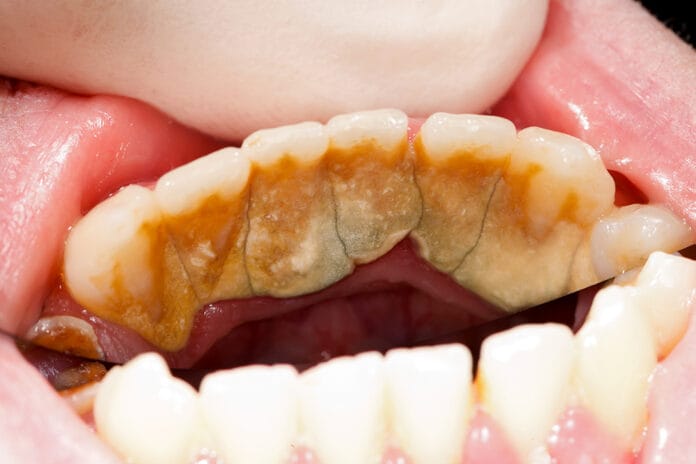A team of researchers from the University of Minnesota decided to organize a clinical trial last year to determine whether an experimental solution could help clinicians remove calculus deposits more quickly when using in conjunction with hand-held instruments. The article, titled “Efficacy of a Prototype Solution to Facilitate the Removal of Supragingival Dental Calculus: A Proof of Concept Study,” was published by the American Dental Hygienists’ Association in the Journal of Dental Hygiene.
A Closer Look at Calculus
When oral fluids (saliva and/or crevicular fluid), which contain calcium and phosphate, saturate biofilm, it can cause calcification, aka calculus. Specifically, supragingival calculus is formed from saliva, and subgingival calculus is formed by saliva and crevicular fluid. Calculus tends to form more readily adjacent to salivary ducts, where the calcium and phosphate in the saliva are less stable.
About the Clinical Trial
The lead author of the study, Professor Miranda A. Drake, MSDH, RF, formed a research team to analyze whether an experimental calculus disruption solution could help clinicians remove supragingival dental calculus deposits faster. Drake is an Interim Division Director and Clinical Associate Professor in the Division of Dental Hygiene at the University of Minnesota. She collaborated on the study with Scott A. Lunos, MS, and Christine M. Blue, BSDH, MS, DHSc. Lunos is a Research Fellow in the University’s Biostatistical Design and Analysis Center. Meanwhile, Blue is the Assistant Dean for Faculty Development, School of Dentistry in the University of Minnesota Department of Primary Dental Care.
For the purpose of the trial, Drake used an experimental calculus disruption solution called EXP-955 as well as small, hand-held instruments. The single-site, randomized, split-mouth clinical trial design made it easy for her team to time how long it took to remove the supragingival dental calculus.
Twenty-five people participated in the trial. They were divided into two quadrants matched for the number of teeth and level of calculus deposits. The treatment group was given the experimental calculus disruption solution, while the control group did not. The team debrided their teeth and timed how long it took for them to remove the supragingival calculus. Drake also supplied the participants with a questionnaire to gather feedback on the experimental solution.
At the end of the trial, the researchers noticed a statistically significant difference in the supragingival calculus removal times between the treatment and control group. The clinicians were able to clean the deposits that were pretreated with the experimental calculus disruption solution almost three minutes faster than the control group. In total, it took the clinicians 12.5 minutes to clean the control group’s teeth and 9.7 minutes for the other group that received the treatment. The responses to the questionnaire were mostly positive since the participants in the treatment group reported less pain during the procedure.
In Conclusion
Drake believes their clinical trial provides enough initial proof clinicians can treat their patients more quickly and effectively with a quality calculus disruption solution. Hopefully, future studies will collect more data on the most advantageous ways to remove supragingival calculus.










